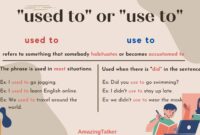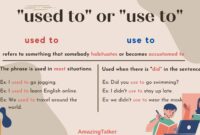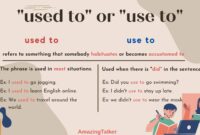Older Ford Ranger Trucks For Sale: Your Comprehensive Guide to Finding the Perfect Compact Pickup sale.truckstrend.com
The Ford Ranger, a name synonymous with compact truck utility and enduring reliability, holds a special place in the hearts of many truck enthusiasts and practical drivers alike. For decades, before its hiatus and subsequent return as a mid-size offering, the older generations of the Ford Ranger carved out a niche as the go-to choice for those seeking an affordable, capable, and maneuverable pickup. This comprehensive guide delves into the world of older Ford Ranger trucks for sale, exploring why they remain a popular choice, what to look for, where to find them, and how to ensure you drive away with a true workhorse rather than a money pit.
Why Choose an Older Ford Ranger? The Enduring Appeal
Older Ford Ranger Trucks For Sale: Your Comprehensive Guide to Finding the Perfect Compact Pickup
In a market dominated by ever-larger and more complex trucks, the older Ford Ranger stands out as a testament to simplicity and functionality. These trucks, primarily referring to the models produced from 1983 through 2011 in North America, offer a compelling blend of attributes that continue to attract a wide range of buyers:
- Durability and Reliability: Built on a robust body-on-frame chassis, older Rangers earned a reputation for being incredibly tough. With a range of well-proven engines (the 2.3L/2.5L four-cylinder, 3.0L V6, and 4.0L V6), many examples have easily surpassed 200,000 or even 300,000 miles with proper maintenance. Their relatively simple mechanicals mean fewer complex systems to fail and easier, often DIY-friendly, repairs.
- Affordability: This is arguably the biggest draw. Compared to new trucks or even newer used models, older Rangers are significantly more affordable to purchase, insure, and maintain. Their lower price point makes them an excellent option for first-time truck owners, those on a tight budget, or individuals needing a secondary utility vehicle.
- Versatility: Despite their compact size, Rangers are surprisingly versatile. They excel as daily commuters, light work trucks for small businesses, reliable college student vehicles, or even capable off-roaders in 4×4 configurations. The short wheelbase makes them agile in urban environments and on tight trails.
- Maneuverability: Their compact dimensions make them easy to park, navigate through city traffic, and fit into smaller garages – a stark contrast to modern full-size trucks.
- Customization Potential: A vast aftermarket exists for older Rangers, allowing owners to easily modify them for off-roading, utility, or aesthetic purposes. Their simplicity also makes them popular project vehicles for those looking to learn automotive mechanics.

Key Generations and What to Look For
Understanding the different generations of the Ford Ranger is crucial when navigating the used market. Each generation brought its own characteristics and potential considerations.
First Generation (1983-1992)
These are the quintessential "mini-trucks" with their iconic boxy styling. They are the most basic and often the cheapest to acquire. Early models featured carbureted engines, while later ones moved to electronic fuel injection (EFI).
- Pros: Simplicity, classic looks, often very cheap.
- Cons: Less refined, fewer creature comforts, parts might be slightly harder to find than later gens.
- Engines: 2.0L/2.3L I4, 2.8L/2.9L V6, 4.0L V6 (late).

Second Generation (1993-1997)

This generation introduced a more rounded, aerodynamic design and significant interior improvements. It marked the widespread adoption of the reliable 4.0L V6 engine and improved automatic transmissions.
- Pros: Improved comfort, good engine options, still very durable.
- Cons: Can still feel a bit dated compared to later models.
- Engines: 2.3L I4, 3.0L V6, 4.0L V6.
Third Generation (1998-2011)
This is by far the most common and popular generation for used Ranger buyers. It featured a significant front suspension redesign (coil springs replacing torsion bars on 4x4s), improved ride quality, and a more modern interior. This generation offers the widest array of trims, engine choices, and configurations.
- Pros: Most refined, widely available parts, excellent aftermarket support, robust engines and transmissions.
- Cons: 4.0L SOHC V6 can have timing chain issues (see "Common Issues").
- Engines: 2.5L I4 (early), 2.3L Duratec I4 (later), 3.0L V6 (Vulcan), 4.0L SOHC V6 (Cologne).
Engine Spotlight:
- 2.3L/2.5L I4 (Lima/Duratec): Fuel-efficient and surprisingly peppy for their size. The 2.3L Duratec (2001+) is a particularly strong, modern four-cylinder. Best for light duty and economy.
- 3.0L V6 (Vulcan): A workhorse known for its incredible longevity. Not the most powerful, but very reliable and a good all-rounder for daily driving and light hauling.
- 4.0L V6 (Cologne OHV/SOHC): The most powerful option, ideal for towing, hauling, and serious off-roading. The older OHV (OverHead Valve) is very robust. The later SOHC (Single OverHead Cam) is more powerful but can suffer from timing chain guide issues, which are expensive to fix. Listen for a distinct rattle, especially on cold starts.
Transmissions:
- Manual (Mazda M5OD-R1): Generally very reliable, offering better fuel economy and driver engagement.
- Automatic (A4LD, 4R44E, 5R55E): Early A4LDs are known to be weak. Later 4R44E and 5R55E units are better, but like any automatic, fluid changes are crucial. The 5R55E (found with 4.0L SOHC) can have solenoid block issues.
Drive Types:
- 2WD (Two-Wheel Drive): More fuel-efficient, simpler, and usually cheaper. Perfect for street use and light duty.
- 4WD (Four-Wheel Drive): Essential for off-roading, snow, or adverse conditions. Adds complexity and cost.
Where to Find Older Ford Rangers For Sale
The hunt for an older Ranger can be an adventure in itself. Here are the most common places to look:
- Online Marketplaces:
- Craigslist/Facebook Marketplace: Often the best source for private party sales. You’ll find the widest range of conditions and prices. Be prepared to sift through many listings and act quickly on good deals.
- eBay Motors: Good for finding specific models, rare parts, or trucks that sellers are willing to ship.
- Dedicated Forums/Groups: Ford Ranger enthusiast forums and Facebook groups often have "for sale" sections where members sell their well-maintained vehicles.
- Used Car Dealerships: While they typically have higher prices due to overhead and reconditioning, you might find a Ranger that has gone through some level of inspection.
- Private Sellers (Local Ads/Word of Mouth): Sometimes the best deals are found through local flyers, community boards, or simply by asking around.
- Auctions: Government surplus, impound lots, or general auto auctions can offer very low prices, but they come with significant risk. Vehicles are sold "as-is," often with little to no prior inspection.
Essential Pre-Purchase Inspection & Considerations
Buying an older vehicle requires a thorough inspection. Don’t skip these steps:
- Rust: This is the #1 killer of older Rangers. Check the frame rails (especially near the rear shackles and behind the front wheels), rocker panels, cab corners, bed supports, and wheel wells. Surface rust is manageable; extensive rot is a deal-breaker.
- Engine:
- Cold Start: Listen for strange noises (knocks, rattles, ticks). The 4.0L SOHC timing chain rattle is most noticeable on cold starts.
- Leaks: Check for oil, coolant, or transmission fluid leaks under the truck and around the engine.
- Smoke: Blue smoke indicates oil burning; white smoke can be coolant.
- Check Engine Light (CEL): If it’s on, get it scanned. If the seller says it’s "just a sensor," be wary.
- Transmission:
- Automatic: Shifts should be smooth, without harsh clunks or slips. Check the fluid level and condition (should be red/pink, not dark brown or burnt smelling).
- Manual: Clutch should engage smoothly, without slipping or excessive effort. Shifter should feel precise, not sloppy.
- Suspension and Steering: Look for worn ball joints, tie rods, control arm bushings, and shocks. Listen for clunks or squeaks over bumps. Check for excessive play in the steering wheel.
- Brakes: Test pedal feel (should be firm, not spongy). Check for pulsing or grinding during braking. Inspect rotors and pads if possible.
- Electrical System: Test all lights (headlights, tail lights, turn signals, brake lights), power windows, mirrors, radio, and HVAC system.
- Tires: Check tread depth and look for uneven wear, which can indicate alignment or suspension issues.
- Test Drive: Drive it at various speeds, including highway speeds. Test acceleration, braking, and turning. Listen for any unusual noises from the drivetrain or suspension.
- Paperwork: Verify the title is clear and matches the VIN on the truck. Ask for service records if available. Run a VIN check (CarFax or AutoCheck) to look for accident history, odometer discrepancies, and previous ownership.
- Professional Inspection: If you’re serious about a truck, invest in a pre-purchase inspection by a trusted mechanic. It’s money well spent.
Common Issues and Solutions
While generally reliable, older Rangers do have some common quirks:
- 4.0L SOHC Timing Chain Guides: As mentioned, this is the most significant potential issue. The plastic guides can wear, causing a rattling noise, especially from the passenger side. Repair is labor-intensive and expensive (engine out).
- Automatic Transmission Problems: Earlier A4LDs and some 5R55E units (particularly with neglect) can develop shifting issues. Regular fluid changes are key to longevity.
- HVAC Blend Door Actuator (3rd Gen): A common failure that prevents hot/cold air control. The good news is it’s a relatively easy and inexpensive DIY fix, often requiring cutting a hole in the plenum box.
- Ball Joints/Tie Rods: These are wear items, especially on 4×4 models or those used off-road. Replacement is straightforward.
- Rust: Keep an eye on it and address any developing rust early to prevent it from spreading.
- Fuel Pump/Filter: Can fail with age. Symptoms include hard starting or stalling. Relatively easy to replace.
- Spark Plugs/Coil Packs: Misfires can often be traced to these components, especially on the 4.0L SOHC which can be finicky.
Owning and Maintaining Your Older Ranger
Part of the appeal of an older Ranger is its DIY-friendly nature. Forums like Ranger-Forums.com and TheRangerStation.com are invaluable resources for repair guides, troubleshooting, and community support. Regular maintenance is key to keeping your Ranger on the road for years:
- Oil Changes: Stick to the manufacturer’s recommended intervals or more frequently if driving in harsh conditions.
- Fluid Checks: Regularly check transmission fluid, coolant, power steering fluid, and brake fluid.
- Grease Zerk Fittings: Many older Rangers have grease fittings on ball joints and tie rods – keep them greased!
- Tire Rotation and Alignment: Essential for tire longevity and safe handling.
- Brake Inspection: Periodically check pads and rotors.
Practical Advice and Actionable Insights
- Set a Realistic Budget: Not just for the purchase price, but also for immediate repairs, registration, and insurance. Older vehicles almost always need some TLC.
- Don’t Rush: There are many Rangers out there. Take your time to find the right one that fits your needs and budget.
- Bring a Friend: If you’re not mechanically inclined, bring a knowledgeable friend or family member who can help with the inspection.
- Prioritize Condition Over Mileage: A well-maintained Ranger with high mileage is often a better buy than a low-mileage one that has been neglected.
- Consider Your Needs: Do you need 4WD? How much towing capacity? What kind of cargo will you haul? Your answers will guide your search.
Older Ford Ranger Price Guide (Estimated)
Please note: Prices are highly variable based on region, specific condition (rust, mechanical health), mileage, trim level (e.g., XLT, FX4, Edge), 2WD/4WD, engine, and local market demand. This table provides a general range.
| Generation/Year Range | Condition: Fair (Needs Work) | Condition: Good (Daily Driver) | Condition: Excellent (Well-Maintained) | Notes |
|---|---|---|---|---|
| 1st Gen (1983-1992) | $500 – $1,500 | $1,500 – $3,500 | $3,500 – $7,000+ | Simpler, often carbureted (early), classic styling. 4x4s fetch more. |
| 2nd Gen (1993-1997) | $1,000 – $2,500 | $2,500 – $5,000 | $5,000 – $8,000+ | More refined, good engine options. Prices vary based on 4.0L V6 and 4×4. |
| 3rd Gen (1998-2011) | $1,500 – $3,500 | $3,500 – $7,000 | $7,000 – $12,000+ | Most common & popular. Prices heavily influenced by engine (4.0L SOHC premium), 4×4, and FX4/Edge trims. |
| Specific Models | FX4/Level II (3rd Gen): Often command a premium ($8,000 – $15,000+) due to upgraded suspension, axles, and rarity. | |||
| Mileage Impact | High mileage (200k+) will be at the lower end of the range, while exceptionally low mileage will be at the higher end. |
Frequently Asked Questions (FAQ)
Q1: What’s the best engine for an older Ford Ranger?
A1: It depends on your needs. For fuel economy and basic commuting, the 2.3L Duratec (2001-2011) is excellent. For a balance of power and extreme reliability, the 3.0L V6 is a workhorse. For maximum power, towing, or off-roading, the 4.0L V6 is the choice, but be aware of potential timing chain issues on the SOHC version.
Q2: Are older Ford Rangers good for off-roading?
A2: Absolutely, especially 4×4 models with the 4.0L V6. Their compact size, solid axles (on 4x4s until 1998), and good ground clearance make them very capable on trails. The FX4 and FX4 Level II trims (3rd Gen) are particularly well-equipped from the factory for off-road adventures.
Q3: How much does insurance cost for an older Ranger?
A3: Generally, insurance for older Ford Rangers is quite affordable compared to newer or larger vehicles. Factors like your driving record, location, and the truck’s specific age and trim will influence the final cost.
Q4: Are parts hard to find for older Ford Rangers?
A4: No, quite the opposite. Due to their immense popularity and long production run, parts for older Rangers are widely available at auto parts stores, online retailers, and salvage yards. Many components are shared across different Ford models, further increasing availability.
Q5: What’s considered "good mileage" for an older Ranger?
A5: For an older Ranger, condition and maintenance history are more important than just mileage. Many Rangers easily last 200,000 to 300,000 miles with proper care. A well-maintained 180,000-mile Ranger can be a better buy than a neglected 100,000-mile one.
Q6: Can an older Ford Ranger tow?
A6: Yes, older Rangers can tow, but their capacity varies significantly by engine, transmission, and configuration. Rangers with the 4.0L V6 typically have the highest towing capacity, often ranging from 4,000 to 6,000 pounds when properly equipped. Always check the specific truck’s owner’s manual or door jamb sticker for its exact towing limits.
Conclusion
The market for older Ford Ranger trucks for sale is vibrant, offering a compelling proposition for those who value practicality, durability, and affordability over modern frills. These compact pickups embody a no-nonsense approach to utility, proving that sometimes, older truly is better. By understanding the different generations, knowing what to inspect, and being prepared for common issues, you can confidently navigate the used market and find an older Ford Ranger that will serve as a reliable, versatile, and characterful companion for years to come. For the right buyer, an older Ranger isn’t just a truck; it’s a smart investment and a capable partner for work and play.




